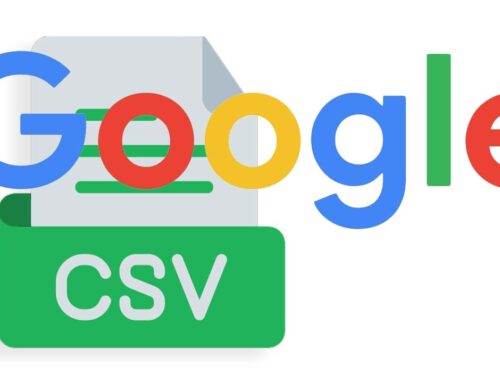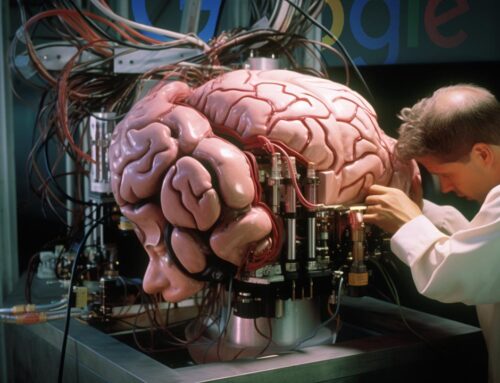Google Knowledge Panel -Google states “Knowledge panels are information boxes that appear on Google when you search for entities (people, places, organizations, things) that are in the Knowledge Graph. They are meant to help you get a quick snapshot of information on a topic based on Google’s understanding of available content on the web”.
Search engines have become the go-to source for finding information. Google, being the most popular search engine worldwide, continuously strives to enhance the search experience for its users. One of the significant advancements in this regard is the introduction of Google’s Knowledge Graph. This powerful tool revolutionizes the way search results are displayed by providing more relevant and comprehensive information directly in the search results page.
My article aims to provide you with a understanding of Google’s Knowledge Panel, Google’s Knowledge Graph, including its purpose, function, and benefits. By end, you will have a clear grasp of how this innovative technology works and the impact it has on enhancing the search experience.
Google’s Knowledge Panels, Graphs, How Does It All Work?
Table of Contents
- What are Google Knowledge Panels?
- What is Google’s Knowledge Graph?
- How Does Google’s Knowledge Graph Work?
- How to Get a Google Knowledge Panel
- The Importance of Schema Markup
- Benefits of Google’s Knowledge Graph
- Challenges and Limitations
- Future Developments
- Frequently Asked Questions
- Final Thoughts
- Sources
What are Google Knowledge Panels?
Google Knowledge Panels are informative boxes that appear on the right-hand side of the search results page when users search for specific entities. These panels provide concise and structured information about a wide range of subjects, including people, places, organizations, events, and more. Knowledge Panels aim to provide users with immediate answers and a comprehensive overview of the entity they are searching for.
Characteristics of Knowledge Panels
Knowledge Panels exhibit several key characteristics:
- Concise Information: Knowledge Panels offer a concise summary of information related to the entity. This includes a brief description, key attributes, images, related entities, and additional details.
- Structured Presentation: The information within Knowledge Panels is presented in a structured format, making it easy for users to scan and comprehend. Sections are organized logically, allowing users to quickly find the information they are seeking.
- Visual Appeal: Knowledge Panels often include relevant images or graphics to enhance visual appeal and provide a glimpse into the entity. This visual element makes the search results more engaging and attractive to users.
- Interactive Elements: Knowledge Panels may contain interactive elements, such as expandable sections, clickable links, or social media profiles. These interactive features allow users to explore additional information or navigate to external sources of interest.
How Knowledge Panels are Generated
Knowledge Panels are generated based on the data and relationships within Google’s Knowledge Graph. The Knowledge Graph is a vast database that connects various entities and their attributes, forming a comprehensive web of knowledge.
When a user enters a search query, Google’s algorithms analyze the query and identify the entity being searched. The algorithms then retrieve relevant information from the Knowledge Graph and generate a Knowledge Panel that corresponds to the entity. The information displayed in the panel is sourced from a combination of licensed databases, public websites, and structured data marked up with schema.org.
Benefits of Knowledge Panels
Google Knowledge Panels offer several benefits to both users and entities:
- Quick Access to Information: Knowledge Panels provide immediate access to essential information, allowing users to quickly find answers to their queries without the need for further navigation.
- Enhanced User Experience: The structured presentation and interactive elements of Knowledge Panels enhance the user experience. Users can explore related topics, access additional details, and gain a deeper understanding of the entity of interest.
- Credibility and Trust: Knowledge Panels source information from reliable and authoritative data sources. This helps build trust and credibility among users, as they can rely on the displayed information to be accurate and trustworthy.
- Increased Visibility for Entities: Entities featured in Knowledge Panels gain increased visibility in search results. This exposure can lead to enhanced brand recognition, increased traffic to their websites, and a broader reach among the user base.
Google Knowledge Panels provide users with concise and structured information about specific entities. They offer a convenient and comprehensive overview of the entity being searched, enriching the search experience and providing valuable insights. For entities, Knowledge Panels offer increased visibility and the opportunity to showcase accurate and curated information to a wide audience.
What is Google’s Knowledge Graph?
Google’s Knowledge Graph is an advanced knowledge base that powers Google’s search engine to deliver more informative and contextual search results. It aims to provide users with direct answers to their queries, presenting relevant information in a structured and easily accessible format. By understanding the relationships between different entities, the Knowledge Graph goes beyond traditional keyword matching and delivers comprehensive search results that encompass a wide range of topics.
Understanding Entities and Relationships
At the core of Google’s Knowledge Graph lies the concept of entities, which can be people, places, things, or abstract concepts. Entities have attributes and are connected through relationships. For example, an entity could be a famous person, and their attributes might include their name, occupation, birth date, and notable achievements. The relationships could be connections to other entities such as their family members, educational background, or places they have lived.
By understanding entities and their relationships, the Knowledge Graph builds a vast network of interconnected information, creating a rich representation of the world’s knowledge.
The Evolution of Search Results
Traditionally, search engines relied on matching keywords to web pages, often displaying a list of relevant links as search results. However, this approach had limitations as it didn’t provide immediate answers or contextual information. The Knowledge Graph revolutionized this paradigm by introducing a more intuitive and informative search experience.
With the Knowledge Graph, search results now include a combination of traditional web page links and a knowledge panel. The knowledge panel appears on the right-hand side of the search results page and contains relevant information related to the query. It provides a concise summary, images, key facts, related entities, and additional details that users can explore without leaving the search results page.
The Knowledge Panel
The knowledge panel is a visually appealing and interactive display of information powered by the Knowledge Graph. It aims to provide users with a quick overview and deeper insights into their search queries. The panel gathers information from various trusted sources, including licensed databases, public websites, and structured data marked up with schema.org.
The information displayed in the knowledge panel is presented in a structured manner, making it easy for users to digest and explore related topics. It may include details such as the entity’s description, images, key attributes, social media profiles, notable works, and related entities. This comprehensive presentation enables users to quickly obtain relevant information without needing to visit multiple websites.
Semantic Search and Natural Language Processing
Google’s Knowledge Graph leverages semantic search and natural language processing (NLP) techniques to understand the intent and context behind user queries. Semantic search aims to understand the meaning of words and phrases in a broader context, rather than relying solely on their literal interpretation. NLP algorithms analyze the structure and semantics of queries to extract their underlying intent and identify the entities involved.
By combining semantic search and NLP, the Knowledge Graph can provide more accurate and relevant search results. It understands that when a user searches for “capital of France,” they are referring to the city of Paris, even if the word “capital” is not explicitly mentioned.
Google’s Knowledge Graph represents a significant advancement in the search engine landscape. By understanding entities, their attributes, and relationships, it provides users with comprehensive and contextually relevant information directly in the search results page. The knowledge panel serves as a valuable resource, presenting structured information in an easily digestible format. As Google continues to refine and expand the Knowledge Graph, users can expect an even more sophisticated search experience that delivers precise and comprehensive answers to their queries.
How Does Google’s Knowledge Graph Work?
Google’s Knowledge Graph operates on a complex infrastructure and employs sophisticated algorithms to deliver accurate and contextually relevant information to users. This section will delve into the underlying mechanisms and processes that power the functioning of the Knowledge Graph.
Data Sources and Acquisition
Google’s Knowledge Graph relies on a diverse range of data sources to gather information about entities and their relationships. These sources include licensed databases, authoritative websites, publicly available information, and user-generated content. Google continuously acquires and updates data from these sources to ensure the accuracy and freshness of the Knowledge Graph.
To acquire data, Google employs web crawlers that explore the web, indexing and analyzing web pages for relevant information. It also partners with trusted sources to obtain licensed data, such as databases of notable individuals, organizations, and other entities. Additionally, user-generated content, such as Wikipedia, plays a significant role in populating the Knowledge Graph.
Entity Extraction and Classification
Once the data is acquired, Google’s algorithms extract entities from the collected information. Entity extraction involves identifying and categorizing specific pieces of data that represent entities, such as names, locations, and attributes. Natural Language Processing (NLP) techniques are employed to understand the textual context and identify entities within the data.
After extracting entities, the algorithms classify them into predefined categories based on their characteristics and attributes. This categorization helps establish the organizational structure of the Knowledge Graph, facilitating effective relationship mapping.
Relationship Mapping and Link Analysis
The Knowledge Graph is built upon a web of relationships between entities. Google’s algorithms analyze the extracted entities and their attributes to identify and establish meaningful connections. Relationship mapping involves understanding the various relationships entities can have, such as familial connections, professional associations, geographical associations, and more.
Link analysis plays a crucial role in establishing relationships within the Knowledge Graph. By analyzing hyperlinks across the web, Google can infer connections and associations between entities. For example, if multiple web pages link to a particular entity using specific anchor text, it indicates a relationship and contributes to the understanding of the Knowledge Graph.
Query Analysis and Intent Recognition
When a user enters a search query, Google’s algorithms analyze the query to understand the user’s intent. Query analysis involves parsing and interpreting the query’s linguistic and semantic elements, extracting keywords, and identifying the underlying concepts and entities involved.
Intent recognition aims to determine the purpose behind the user’s query and identify the specific information they are seeking. By leveraging the context provided by the Knowledge Graph, Google can comprehend user queries more accurately and provide relevant search results.
Displaying Information: The Knowledge Panel
Once the user’s intent is understood, Google’s algorithms retrieve relevant information from the Knowledge Graph and generate a knowledge panel. The knowledge panel is a visually appealing display that appears on the search results page, providing a concise summary, images, key attributes, and related entities.
The information presented in the knowledge panel is carefully selected based on relevance and user preferences. It offers users a quick overview of the entity they searched for and allows them to explore related information without navigating to external websites.
Google’s Knowledge Graph operates through a combination of data acquisition, entity extraction and classification, relationship mapping, query analysis, and intent recognition. By leveraging these processes, Google provides users with a comprehensive and contextually relevant search experience, enhancing the overall search ecosystem.
How to Get a Google Knowledge Panel
Getting a Google Knowledge Panel for your entity can significantly enhance your online presence and visibility. This section outlines the steps and considerations to increase your chances of getting a Knowledge Panel.
Establish Entity Notability
Google requires a certain level of notability for an entity to be eligible for a Knowledge Panel. To establish notability, focus on building a strong online presence through reputable sources such as news articles, notable mentions, awards, or significant contributions in your field. Developing a notable and credible reputation increases your chances of being recognized by Google.
Claim Your Online Presence
It’s crucial to claim and optimize your online presence across various platforms. Create official profiles on social media platforms, professional directories, and relevant websites. This helps establish your entity’s authority, ensures accuracy of information, and increases the likelihood of being considered for a Knowledge Panel.
Optimize Your Website
Optimizing your website is essential for gaining visibility and being considered for a Knowledge Panel. Ensure your website provides comprehensive and up-to-date information about your entity. Optimize the content using relevant keywords, meta tags, and descriptive headings to improve search engine visibility.
Implement Structured Data
Implementing structured data using schema markup is crucial for enabling search engines to understand and interpret your entity’s information accurately. Use appropriate schema types related to your entity, such as Person, Organization, or LocalBusiness, and mark up relevant details like name, logo, contact information, and social profiles. Structured data helps search engines identify key information for potential inclusion in a Knowledge Panel.
Create and Manage a Google My Business Listing
For local businesses, creating and managing a Google My Business listing is essential. Claim your business profile, verify and update your information, including name, address, phone number, and operating hours. Encourage customer reviews and respond to them promptly. A well-maintained Google My Business listing increases your entity’s visibility and improves the chances of a Knowledge Panel appearing.
Verify and Update Entity Information
If your entity already has a Knowledge Panel but lacks verified and accurate information, you can take steps to claim and manage it. Use the Google Knowledge Panel verification process to claim ownership and update the displayed information. Verify the accuracy of details, including official name, logo, description, and contact information. Regularly update and monitor your entity’s Knowledge Panel to ensure it accurately represents your entity.
Obtaining a Google Knowledge Panel requires establishing notability, optimizing your online presence, implementing structured data, and managing your entity’s information across various platforms. While Google’s algorithms ultimately determine the eligibility and content of Knowledge Panels, following these steps increases your chances of being recognized and featured prominently on the search results page.
The Importance of Schema Markup
Schema markup plays a crucial role in ensuring that websites’ content is correctly understood and utilized by Google’s Knowledge Graph. This section explores the significance of schema markup and its impact on improving visibility and search results.
Understanding Schema Markup
Schema markup is a standardized format that webmasters can use to provide explicit information about the content on their websites. It utilizes structured data vocabulary and markup code to communicate specific details about entities, events, products, and more.
By incorporating schema markup into their website’s HTML code, webmasters enable search engines to better understand the content and context of the information on their pages. This, in turn, enhances the visibility and presentation of the website’s content in search results.
Structured Data and Rich Snippets
Schema markup enables the creation of rich snippets, which are enhanced search results that display additional information beyond the traditional title, URL, and description. Rich snippets utilize structured data to provide more context and details, such as ratings, reviews, pricing, availability, and other relevant information.
By incorporating schema markup, websites have the opportunity to display rich snippets in search results, making their listings more appealing and informative. Rich snippets attract users’ attention, increasing the chances of click-throughs and engagement.
Enhanced Visibility in Search Results
Websites that implement schema markup effectively can experience enhanced visibility in search results. By providing explicit information through structured data, search engines can better understand and categorize the content on the website.
This improved understanding enables search engines to display relevant information in various formats, such as knowledge panels, carousels, or featured snippets. Websites that leverage schema markup have a higher likelihood of being featured prominently in these special search result formats, gaining increased visibility and attracting more organic traffic.
Improved Click-Through Rates
Schema markup can significantly impact click-through rates (CTRs) by enhancing the appearance and relevance of search results. Rich snippets, enabled by schema markup, provide users with more information upfront, making them more likely to click on a particular search result.
When search results contain additional details, such as star ratings, price ranges, or availability, users can quickly assess the relevance and credibility of a webpage. This increased visibility and pre-selection of information result in higher CTRs for websites that have implemented schema markup.
Enabling Rich Results and Knowledge Panels
Schema markup enables websites to be eligible for rich results, which are search results that include additional visuals or interactive elements. Rich results encompass various formats, including recipe cards, event listings, product information, and more. These visually enhanced results attract users’ attention and provide them with a more engaging search experience.
Moreover, schema markup improves the chances of websites being featured in the knowledge panel. The knowledge panel, generated by Google’s Knowledge Graph, presents a concise summary of information related to a specific entity, offering users quick access to relevant details without navigating to other websites.
Schema Markup Best Practices
To maximize the benefits of schema markup, webmasters should follow some best practices:
- Use appropriate schema types: Select the most relevant schema types that accurately describe the content on your website. Refer to schema.org for a comprehensive list of available schema types.
- Implement correct markup: Ensure that the schema markup is implemented correctly in the HTML code of your web pages. Use the appropriate structured data format, such as JSON-LD, Microdata, or RDFa.
- Provide accurate and up-to-date information: Ensure that the information provided through schema markup is accurate, up-to-date, and consistent with the content on your website. Inaccurate or outdated information can harm the user experience and credibility.
- Test and validate: Use Google’s Structured Data Testing Tool or other schema markup validation tools to check for errors and ensure that the markup is interpreted correctly by search engines.
By sticking to these best practices, websites can effectively leverage schema markup to improve visibility, enhance search results, and provide a better user experience.
Schema markup plays a vital role in enhancing a website’s visibility, search result appearance, and overall user experience. By incorporating structured data through schema markup, websites can optimize their content for search engines and increase their chances of appearing in rich snippets, knowledge panels, and other prominent search result formats.
Benefits of Google’s Knowledge Graph
Google’s Knowledge Graph offers numerous benefits to both users and website owners. This section explores the advantages of the Knowledge Graph and its impact on enhancing the search experience.
Enhanced Search Experience
Google’s Knowledge Graph revolutionizes the search experience by providing users with immediate and relevant information directly in the search results. Instead of having to navigate through multiple web pages, users can find quick answers and comprehensive information right on the search results page.
The Knowledge Graph’s knowledge panels offer concise summaries, images, related entities, and additional details, allowing users to grasp key information at a glance. This enhanced search experience saves time, provides convenience, and improves overall user satisfaction.
Increased Visibility and Organic Traffic
Websites that appear in the knowledge panels and other special search result formats of the Knowledge Graph gain increased visibility in search results. When a website’s content is featured prominently and showcased with rich snippets or knowledge panels, it stands out among other search results.
This increased visibility attracts more attention from users, resulting in higher click-through rates and organic traffic. Websites that leverage the Knowledge Graph effectively can experience a significant boost in their online presence and reach a wider audience.
Structured and Organized Information
The Knowledge Graph presents information in a structured and organized manner, making it easier for users to comprehend and explore related topics. By extracting and categorizing entities, relationships, and attributes, the Knowledge Graph provides a comprehensive view of specific subjects.
This structured presentation enables users to delve deeper into topics of interest, discover related entities, and explore various aspects without the need to visit multiple web pages. The organized information provided by the Knowledge Graph enhances user understanding and facilitates efficient knowledge acquisition.
Quick Answers to Queries
One of the significant benefits of the Knowledge Graph is the ability to provide quick answers to factual queries. Users can obtain immediate responses to questions such as the population of a city, the release date of a movie, or the definition of a term, without the need to click through to external websites.
This feature saves users time and provides instant gratification by offering concise and accurate answers directly in the search results. Quick access to factual information improves the overall search experience and fulfills users’ information needs promptly.
Google’s Knowledge Graph offers substantial benefits to both users and website owners. It enhances the search experience by providing immediate and relevant information, increases the visibility of websites in search results, presents information in a structured manner, and offers quick answers to factual queries. Leveraging the Knowledge Graph can greatly impact user satisfaction, website visibility, and the overall effectiveness of online search.
Challenges and Limitations
While Google’s Knowledge Graph brings significant advancements to search technology, it also faces several challenges and limitations. This section explores some of the key challenges and limitations associated with the Knowledge Graph.
Data Accuracy and Freshness
One of the challenges of the Knowledge Graph is ensuring the accuracy and freshness of the data it relies on. While Google strives to acquire information from authoritative and trusted sources, there is always a possibility of outdated or incorrect data being included in the Knowledge Graph.
Data accuracy is crucial, especially when presenting factual information or details about individuals, organizations, or events. Google continuously works to improve data quality, but occasional inaccuracies may still exist, affecting the reliability of information displayed in the knowledge panels.
Subjectivity and Bias
Another challenge faced by the Knowledge Graph is the potential subjectivity and bias inherent in the data sources it relies on. The algorithms that build the Knowledge Graph interpret and categorize information based on various sources, including user-generated content and publicly available data. These sources may contain subjective viewpoints, cultural biases, or inaccurate information.
While Google takes measures to mitigate bias, it is challenging to eliminate all potential biases completely. This subjectivity and bias may occasionally manifest in the information presented through the knowledge panels, impacting the objectivity and reliability of search results.
Limited Coverage
Despite its vast scope, the Knowledge Graph may have limited coverage, particularly when it comes to niche or emerging topics. The Graph primarily focuses on popular and well-established entities, leaving relatively less-known or specialized subjects with lower representation.
The limited coverage can result in incomplete or insufficient information being displayed in the knowledge panels for certain queries. Users seeking information on niche or specific topics may need to rely on additional sources beyond the Knowledge Graph to obtain comprehensive details.
While Google’s Knowledge Graph offers numerous benefits, it also faces challenges and limitations. Ensuring data accuracy and freshness, addressing subjectivity and bias, and expanding coverage to include more diverse topics are ongoing endeavors for Google. Understanding these challenges helps users and website owners critically evaluate the information presented through the Knowledge Graph and consider alternative sources when necessary.
Future Developments
Google’s Knowledge Graph is an evolving technology that continues to advance and improve over time. This section explores some potential future developments and advancements that can be expected for the Knowledge Graph.
Expanded Coverage and Localization
One of the future directions for the Knowledge Graph is the expansion of coverage to include a broader range of topics and entities. As Google acquires more data and refines its algorithms, the Knowledge Graph is expected to encompass more niche and specialized subjects, providing comprehensive information on a wider array of topics.
Additionally, localization is a key aspect that Google aims to improve. The Knowledge Graph will continue to evolve in its understanding of localized information, ensuring that search results and knowledge panels are tailored to specific regions, languages, and cultural contexts.
Improved Contextual Understanding
Google’s ongoing efforts involve enhancing the contextual understanding of queries and search results. The Knowledge Graph will continue to refine its algorithms to better understand the intent, context, and nuances behind users’ queries.
By considering factors such as search history, user preferences, and real-time events, the Knowledge Graph can provide even more accurate and personalized search results. This improved contextual understanding will lead to more relevant and tailored information being presented to users.
Integration with Voice Search and Virtual Assistants
The future of the Knowledge Graph is closely tied to the rise of voice search and virtual assistants. As voice-based interactions become more prevalent, the Knowledge Graph will play a significant role in understanding natural language queries and providing relevant answers through voice-based responses.
Integrating the Knowledge Graph with virtual assistants like Google Assistant will enable more conversational and context-aware interactions. Users can expect seamless transitions between voice-based queries and visual displays, with the Knowledge Graph serving as a central knowledge base for delivering accurate and comprehensive information.
The future of Google’s Knowledge Graph holds exciting possibilities. Expanded coverage, improved contextual understanding, and integration with voice search and virtual assistants are just some of the developments to anticipate. These advancements will further enhance the search experience, making it more personalized, efficient, and intuitive for users.
Frequently Asked Questions
Here are some frequently asked questions about Google's Knowledge Graph and Knowledge Panels:
Final Thoughts
Google’s Knowledge Graph has transformed the way search results are displayed, providing users with quick, relevant, and structured information directly on the search results page. By understanding the context and relationships between different entities, the Knowledge Graph enables a more intuitive and efficient search experience. Website owners can leverage structured data and schema markup to increase their visibility and drive organic traffic. As Google continues to refine and expand the Knowledge Graph, users can expect even more accurate and comprehensive search results in the future.
Sources
- Google Search Central. (n.d.). What is the Knowledge Graph?
- Google. (n.d.). About Knowledge Panels
- Singhal, A. (2012). Introducing the Knowledge Graph: Things, not Strings















Leave A Comment